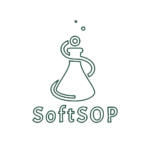The U.S. food industry continues to evolve under the influence of regulatory changes designed to enhance safety, improve transparency, and modernize operations. In 2025, the FDA has introduced several critical updates, including new traceability rules under the Food Safety Modernization Act (FSMA), the revocation of outdated food standards, and the release of the Human Foods Program Guidance Agenda. These changes impact food manufacturers, distributors, and service providers, requiring updated Standard Operating Procedures (SOPs) and proactive compliance strategies. This article provides an overview of these updates, their implications, and practical implementation steps for food industry stakeholders.
1. FDA’s Food Traceability Final Rule (FSMA Section 204)
Overview:
The Food Traceability Final Rule, issued under Section 204 of the FSMA, mandates enhanced record-keeping and traceability for foods on the Food Traceability List (FTL). The rule is intended to accelerate the identification and removal of contaminated products from the supply chain, thereby reducing the risk of foodborne illness outbreaks. Foods covered include leafy greens, certain nuts, fruits, and seafood, among others.
Implementation Process:
- Identify Covered Foods:
Businesses must review their product catalog and classify items that fall under the FTL. Only those products require enhanced traceability documentation. - Map Supply Chain:
Companies should create a comprehensive map of suppliers, processors, distributors, and retailers involved in producing and transporting each covered food. - Develop Record-Keeping SOPs:
SOPs should outline how data is collected, stored, and shared. Essential records include lot numbers, harvest dates, processing steps, and distribution channels. - Integrate Technology Solutions:
Many organizations implement digital traceability systems, such as blockchain or ERP software, to improve accuracy, reduce manual errors, and facilitate audits. - Train Employees and Partners:
Staff and suppliers must be trained to understand new documentation requirements and traceability workflows. Training ensures compliance and strengthens operational accountability. - Audit and Monitor Compliance:
Regular internal audits help verify adherence to FSMA Section 204 requirements and identify gaps before FDA inspections.
Key Reference:
- FDA FSMA Final Rule on Food Traceability: https://www.fda.gov/food/food-safety-modernization-act-fsma/fsma-final-rule-requirements-additional-traceability-records-certain-foods
2. Revocation of 52 Obsolete Food Standards
Overview:
In July 2025, the FDA revoked 52 outdated food standards of identity. These included standards for canned fruits and vegetables, dairy products, and bakery items. The revocation provides manufacturers with greater flexibility in product formulation while maintaining compliance with labeling, safety, and nutritional requirements.
Implementation Process:
- Review Affected Products:
Identify all products previously governed by the revoked standards. - Update SOPs:
SOPs related to formulation, processing, and quality control must reflect the new flexibility in product specifications. - Assess Labeling Requirements:
Labels should be revised to ensure continued compliance with CFR Title 21 regulations, particularly regarding nutrient content claims and ingredient listings. - Communicate Changes Internally:
Production, quality assurance, and regulatory teams must be aligned on new processes and documentation practices. - Monitor Consumer Feedback:
Changes in product formulation may affect consumer perception. Implement feedback loops to track satisfaction and adjust processes if necessary.
Key Reference:
- FDA Announcement on Revocation of Food Standards: https://www.fda.gov/news-events/press-announcements/fda-revoke-52-obsolete-standards-identity-food-products
3. Human Foods Program Guidance Agenda – 2025
Overview:
The FDA’s Human Foods Program released its 2025 guidance agenda, which outlines the agency’s priorities for updating existing guidance documents and introducing new guidance for food manufacturers. The agenda addresses emerging food safety challenges, technology adoption, and compliance strategies in human food production.
Implementation Process:
- Review Guidance Agenda:
Companies should thoroughly review the updated agenda to identify which guidance documents apply to their operations. - Gap Analysis:
Conduct a gap analysis to determine areas where current SOPs or practices may fall short of the new guidance. - Revise SOPs and Policies:
Incorporate guidance updates into internal SOPs for production, sanitation, storage, and distribution. - Staff Training and Certification:
Ensure employees understand new guidance requirements. Consider additional certifications for specialized areas such as allergen management or preventive controls. - Continuous Improvement:
Establish a feedback loop for SOP effectiveness, ensuring that new guidance is fully integrated and compliance is sustained.
Key Reference:
- FDA 2025 Human Foods Program Guidance Agenda: https://www.fda.gov/food/hfp-constituent-updates/fda-releases-2025-human-foods-program-guidance-agenda
4. Integration with ISO 9001:2015
Overview:
ISO 9001:2015 provides a quality management framework that complements FDA regulations. Implementing ISO 9001 practices ensures that businesses maintain robust documentation, risk management processes, and continuous improvement mechanisms, which support compliance with FSMA and other CFR requirements.
Implementation Process:
- Document Key Processes:
Align SOPs with ISO requirements to ensure traceability, consistency, and audit readiness. - Identify and Mitigate Risks:
Develop risk management plans addressing potential hazards in production, packaging, and distribution. - Monitor Performance Metrics:
Track quality, safety, and operational metrics to ensure alignment with regulatory standards. - Conduct Internal Audits:
Use audits to detect non-compliance, implement corrective actions, and improve overall food safety and quality. - Promote a Culture of Continuous Improvement:
Encourage iterative refinement of processes, integrating lessons learned from audits, inspections, and employee feedback.
Key Reference:
- ISO 9001:2015 – Quality Management Systems Requirements: https://www.iso.org/iso-9001-quality-management.html
5. Strategic Benefits for Food Industry Stakeholders
Adopting these regulatory updates and implementing effective SOPs has several benefits for food manufacturers, distributors, and suppliers:
- Enhanced Food Safety: Reduced risk of contamination and quicker recall response.
- Regulatory Compliance: Alignment with FDA regulations and ISO standards reduces the likelihood of penalties.
- Operational Efficiency: Streamlined processes and standardized SOPs improve productivity.
- Consumer Confidence: Transparent practices increase trust in brand integrity and product quality.
- Continuous Improvement: Structured systems foster ongoing enhancement of quality and safety measures.
Conclusion
The FDA’s 2025 regulatory updates reflect the agency’s commitment to modernizing food safety, improving traceability, and supporting the evolving needs of the food industry. Businesses that proactively adopt these rules, revise SOPs, and integrate ISO 9001:2015 quality management practices will be well-positioned to ensure compliance, enhance operational efficiency, and maintain consumer trust. Implementing these updates requires a structured approach, including mapping supply chains, updating procedures, training staff, and monitoring performance. By embracing these changes, the U.S. food industry can maintain global leadership in safety, quality, and innovation.

